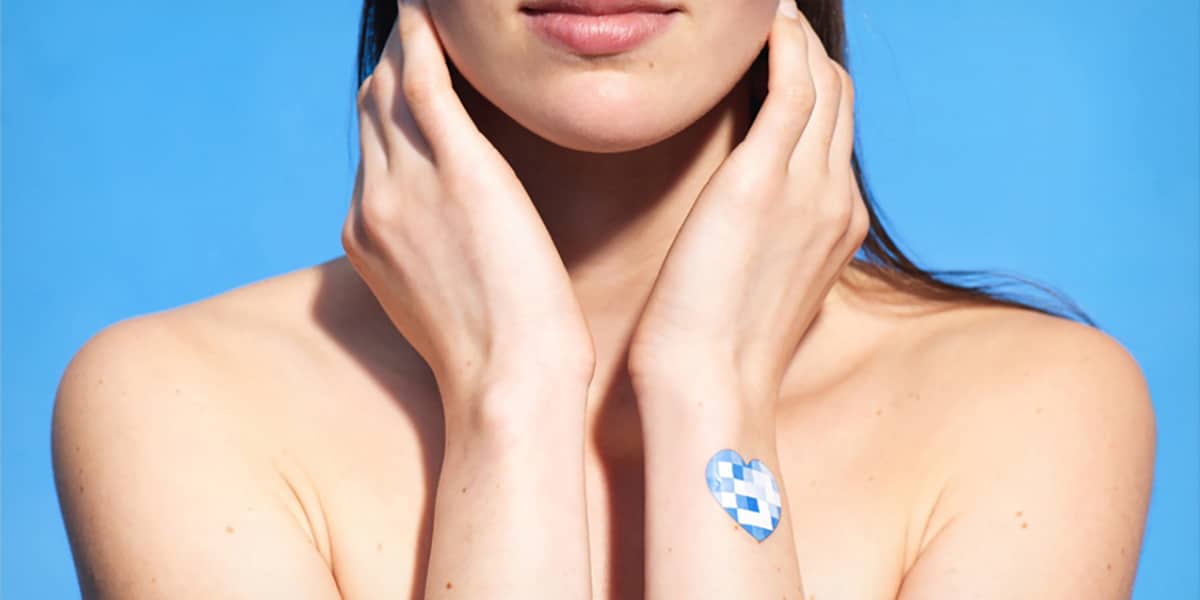If you’re sun savvy, you’ve probably heard about different products on the market that claim to help you protect your skin from the sun. Included in this list of products are disposable patches and wristbands that change colour in response to UV radiation exposure, thereby letting you know when your sunscreen has lost effectiveness. While Sunburn Alert Bands, Sunscreen Bands, Sundicators, Smartsun bands, Seafolly bands, Suncayr patches, and similar products can come in handy, smart sun safety wearables are a better choice when considering the specifics. Most importantly, smart sun safety wearables focus on your skin rather than the sunscreen on your skin, helping you to be safe in the sun without missing out on natural vitamin D production. Here are a few more reasons why you shouldn’t rely only on sunscreen patches and wristbands for sun safety:
1) They don’t tell you how much sunscreen to apply.
Sunscreen patches and wristbands simply let you know when your sunscreen has become ineffective. Smart wearables tell you know exactly how much sunscreen you need to apply based on your height, weight, and clothing choice, to get the maximum sun protection offered by your sunscreen. They also remind you to reapply sunscreen.
2) They’re not always suitable for all skin types.Some brands of patches and wristbands aren’t recommended for use on skin type I (those with light hair and pale skin who burn easily and never tan). Ironically enough, these individuals need to be the most careful when it comes to sun protection. Smart wearables will help you to be safe in the sun, no matter what your skin type is.
3) They don’t account for all types of sun protection.
UV radiation exposure is a major risk factor in the development of skin cancer. The Skin Cancer Foundation recommends using hats, sunglasses, and protective clothing, along with sunscreen to adequately protect against skin cancer – not just sunscreen. Smart wearables can let you know what types of sun protection you need based on the UV index and your skin type.
4) They don’t tell you how long you have until getting sunburned.
The colour of the patch or wristband changes without warning, which could leave you caught somewhere without adequate sun protection. Smart wearables display a countdown so you’ll know in advance when you’ll need to seek sun protection.
5) They don’t store sun exposure information.
Damage due to sun exposure is cumulative. Instead of forgetting about the day’s sun exposure, you can look back on your sun exposure stats several days later.
6) Some require attachment to human skin.Smart wearables can clip onto any piece of clothing or accessory, and do not require attachment to the skin. This means you won’t need to worry about peeling a patch off of your skin every day (or peeling a patch off of your kids’ skin).
7) Some need to be activated before each use.
Some patches and wristbands require you to activate the product before applying sunscreen to it, by exposing the patch or wristband to UV radiation. If you choose a smart wearable, all you have to do is wear it.
8) They’re disposable and not cost-effective in the long run.
Sunscreen patches and wristbands are disposable and only last one day, whereas a Sun Index will last for years. If you pay $8 for 6 wristbands and use a wristband for 70% of the days in a year (that’s about 250 days), you’ll end up spending more than 7 times as much in 2 years, compared to purchasing one Sun Index.



